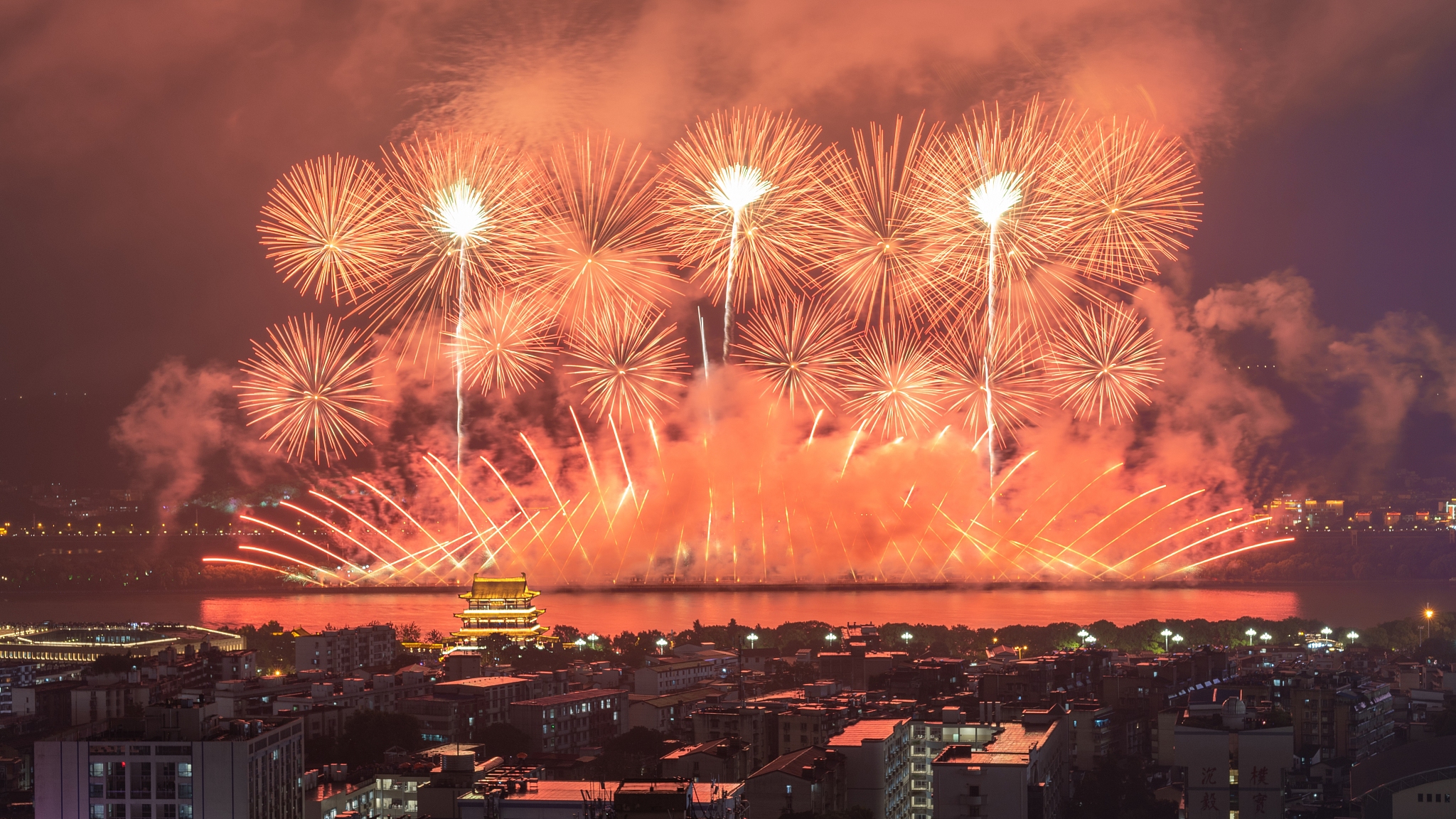Changsha City, capital of central China's Hunan Province, was ranked among the top 10 most popular tourist destinations in the country during the five-day Labor Day holiday from May 1 to 5 and was rated one of the cities with the best nightlife. Hundreds of thousands of tourists flocked to the city by high-speed railway or air – many just for a cup of milk tea or a plate of crayfish, even if it meant queuing up for hours.
So, what's behind Changsha's popularity?
Economic prowess
Since 2017, Changsha has secured a place among cities having a GDP of over 1 trillion yuan (about $145 billion per 2020 average exchange rate). In 2020, there were 23 cities in the 1-trillion-yuan club.
'Capital of construction machinery'
What many may not know is that Changsha, apart from being an "online celebrity," is also the "capital of construction machinery." In 2020, Changsha's construction machinery industry posted a total output value of 250 billion yuan (about $36 billion), ranking first in China in terms of scale for 10 consecutive years and accounting for about 27.5 percent of the national total and 7.2 percent of the global total.

Excavators are shown at the 2021 Changsha International Construction Equipment Exhibition in Changsha, Hunan Province, central China, May 20, 2021. /CFP
Excavators are shown at the 2021 Changsha International Construction Equipment Exhibition in Changsha, Hunan Province, central China, May 20, 2021. /CFP
With an increasing contribution from the tertiary sector, Changsha's industrial structure is continuing to be optimized.
A lucrative cultural sector
Moreover, Changsha's cultural sector is a pillar of its economy. The sector's share in the local economy is greater than the ones in most capital cities, with the added value accounting for 9 percent of the local GDP and a gross output of 300 billion yuan (about $43.5 billion), Mayor Zheng Jianxin said in November 2020.
The fireworks industry accounted for over 30 percent of Changsha's cultural sector. Tourists on Orange Island, a popular destination in Changsha, enjoy a visual feast of fireworks during major public holidays.

Fireworks in celebration of the 100th anniversary of the founding of the Communist Party of China on the Orange Island in Changsha, Hunan Province, central China, June 30, 2021. /CFP
Fireworks in celebration of the 100th anniversary of the founding of the Communist Party of China on the Orange Island in Changsha, Hunan Province, central China, June 30, 2021. /CFP
Embracing the heritage
Furthermore, Changsha is home to Hunan TV station, known as Mango TV, a pioneer in developing entertainment shows, talent shows and dramas. It makes full use of the celebrity effect to promote local specialties and culture, such as spicy crawfish and Hunan cuisine.

Published on May 8, 2021, the photo shows a recording scene of the "Happy Camp" show of Mango TV, or Hunan TV station. /CFP
Published on May 8, 2021, the photo shows a recording scene of the "Happy Camp" show of Mango TV, or Hunan TV station. /CFP
Changsha also became the first Chinese city to be recognized by the United Nations Organization for Education, Science and Culture (UNESCO) as a Creative City in media arts in November 2017.
As a pivotal city of the Belt and Road Initiative, Changsha boasts its fair share of cultural heritage as well as innovation and creativity. It has been leveraging its cultural industry to realize sustainable urban development, such as by constructing industrial parks and arts towns, encouraging public participation in cultural activities and integrating local culture into urban development.
More so, the city's local government aims to infuse Changsha's culture into its overarching economic and social development plans. One initiative is that it has been facilitating brands in traditional industries to infuse more cultural elements in their businesses, leading them to become local sensations. Two prominent examples in this regard are Sexy Tea, a local milk tea brand that has become a huge hit on Chinese social media platforms, and Wenheyou, a restaurant focused on local culinary delicacies, drawing tourists from all over China.
Graphics by Fan Chenxiao

